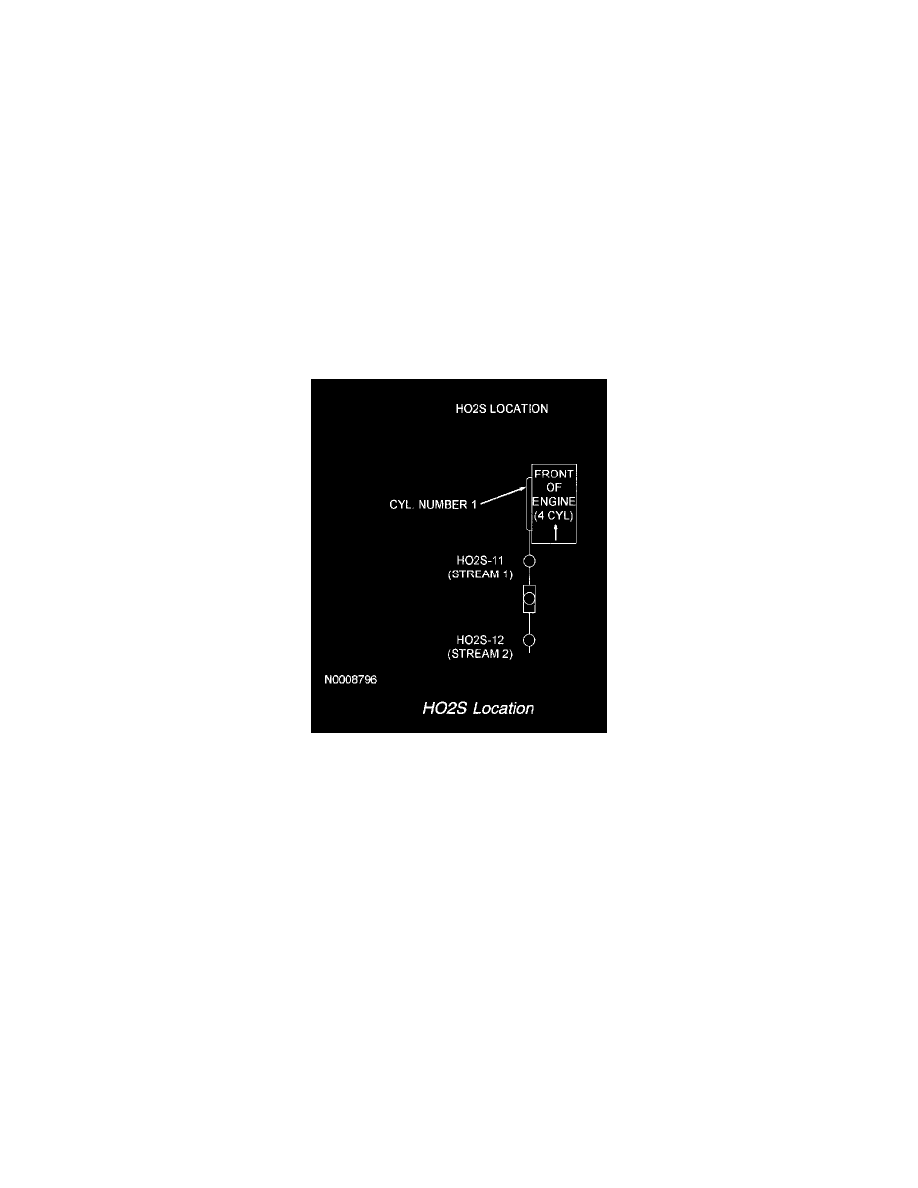Fusion FWD L4-2.5L Hybrid (2010)

Catalytic Converter: Description and Operation
CATALYST AND EXHAUST SYSTEM
Overview
The catalytic converter and exhaust systems work together to control the release of harmful engine exhaust emissions into the atmosphere. The engine
exhaust gas consists mainly of nitrogen (N), carbon dioxide (CO2) and water vapor (H2O). However, it also contains carbon monoxide (CO), oxides
of nitrogen (NOx) , hydrogen (H), and various unburned hydrocarbons (HCs). The major air pollutants of CO, NOx, and HCs, and their emission into
the atmosphere must be controlled.
The exhaust system generally consists of an exhaust manifold, front exhaust pipe, front universal heated oxygen sensor (HO2S), rear exhaust pipe, rear
HO2S, a muffler and an exhaust tailpipe. The catalytic converter is installed between the front and rear exhaust pipes. Catalytic converter efficiency is
monitored by the on board diagnostic (OBD) system strategy in the powertrain control module (PCM). For specific OBD catalyst monitor information,
refer to the Catalyst Efficiency Monitor. See: Computers and Control Systems/Testing and Inspection/Monitors, Trips, Drive Cycles and Readiness
Codes/Catalyst Efficiency Monitor
The number of HO2Ss used in the exhaust stream and the location of these sensors depend on the vehicle emission certification level (LEV, ULEV,
PZEV). The hybrid vehicle is a partial zero emission vehicle (PZEV) equipped with two separate HO2Ss that provide input to the PCM. The first
sensor in the exhaust stream before the catalyst is used for primary fuel control and the last sensor after the catalyst is used to monitor the light-off
catalyst.
HO2S Location
Catalytic Converter
A catalyst is a material that remains unchanged when it initiates and increases the speed of a chemical reaction. A catalyst also enables a chemical
reaction to occur at a lower temperature. The concentration of exhaust gas products released to the atmosphere must be controlled. The catalytic
converter assists in this task. It contains a catalyst in the form of a specially treated ceramic honeycomb structure saturated with catalytically active
precious metals. As the exhaust gases come in contact with the catalyst, they are changed into mostly harmless products. The catalyst initiates and
speeds up heat producing chemical reactions of the exhaust gas components so they are used up as much as possible.
Light-Off Catalyst
As the catalyst heats up, converter efficiency rises rapidly. The point at which conversion efficiency exceeds 50% is called catalyst light off. For most
catalysts this point occurs at 246°C to 301°C (475°F to 574°F). The light-off catalyst is located close to the exhaust manifold and lights off faster and
reduces emissions quicker than the catalyst located under the body. Once the catalyst lights off, it quickly reaches the maximum conversion efficiency
for that catalyst.
Exhaust System
The purpose of the exhaust system is to convey engine emissions from the exhaust manifold to the atmosphere. Engine exhaust emissions are directed
from the engine exhaust manifold to the catalytic converter through the front exhaust pipe. A HO2S is mounted on the front exhaust pipe before the
catalyst. The catalytic converter reduces the concentration of CO, unburned HCs, and NOx in the exhaust emissions to an acceptable level. The
reduced exhaust emissions are directed from the catalytic converter past another HO2S mounted in the rear exhaust pipe and then on into the muffler.
Finally, the exhaust emissions are directed to the atmosphere through an exhaust tailpipe.
Underbody Catalyst
